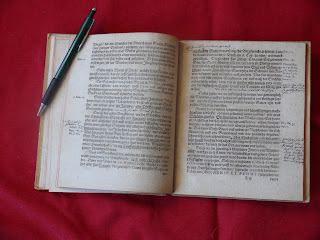[Grasshoff, Johann] Aperta Arca Arcani Artificiosissimi. Das ist: Eröffneter und offenstehender Kasten der allergrösten und künstlichsten Geheimnüssen der Natur / des Grossen und Kleinen Bauers. Leipzig, 1658.
Octavo. pp. xvi (last two blank), 236. a8 (last blank), A8-P6.

Johann Grasshoff (c. 1560-1623) was a jurist and syndic in the region of Pomerania, and later became a councilor to Ernest, archbishop and elector of Cologne, before retiring to Livonia (a region generally corresponding to modern Lithuania). He authored works and wrote letters under the names Grassæus, Chortalasseus, and Hermannus Condeesyanus. He was instrumental in the editing and publication of the Museum Hermeticum and its German original, the Dyas chymica tripartita, both of which were printed in Frankfurt in 1625 by Lucas Jennis.

The Aperta Arca Arcani Artificiosissimi, offered here, is a collection of three works attributed to Grasshoff, supplemented by two other anonymous tracts. The three Grasshoff works are Der Grosse Bauer, Der Kleine Bauer, and Physica Naturalis Rotunda Visionis Chymicæ Cabalistica. Der Grosse Bauer contains a detailed account of the generation of metals and their ores, based on which a long discussion of metallic transmutation, concerning the primal matter of the metals and the composition of the Philosophers Stone, follows. The second part, Der Kleine Bauer, is a parable in which the narrator is guided by a peasant (a kleinbauer) through an explanation of alchemical truths based on the nature occurring around them. The Physica Naturalis, is an exposition of Grasshoff’s views on generation in Nature, with a section about the creation of humans and animals, and another about that of minerals and plants.
These three are followed by an anonymous, theoretical work on potable gold and the Philosophers’ Stone (Warnung, Instruction und Beweiss...), and a short tract purporting to be two responses from the Rosicrucian Brotherhood (2 Respons von den F.R.C.).










